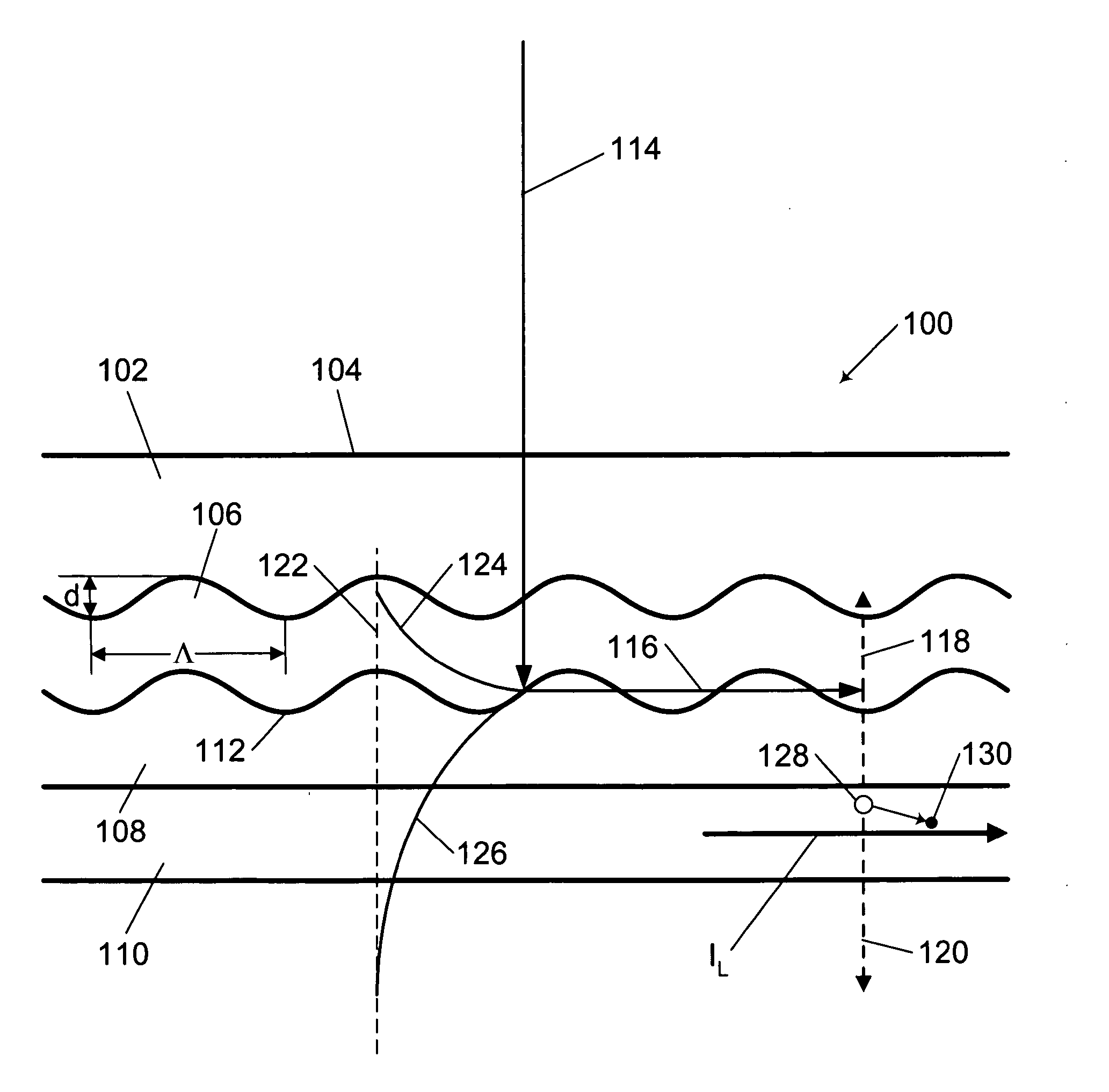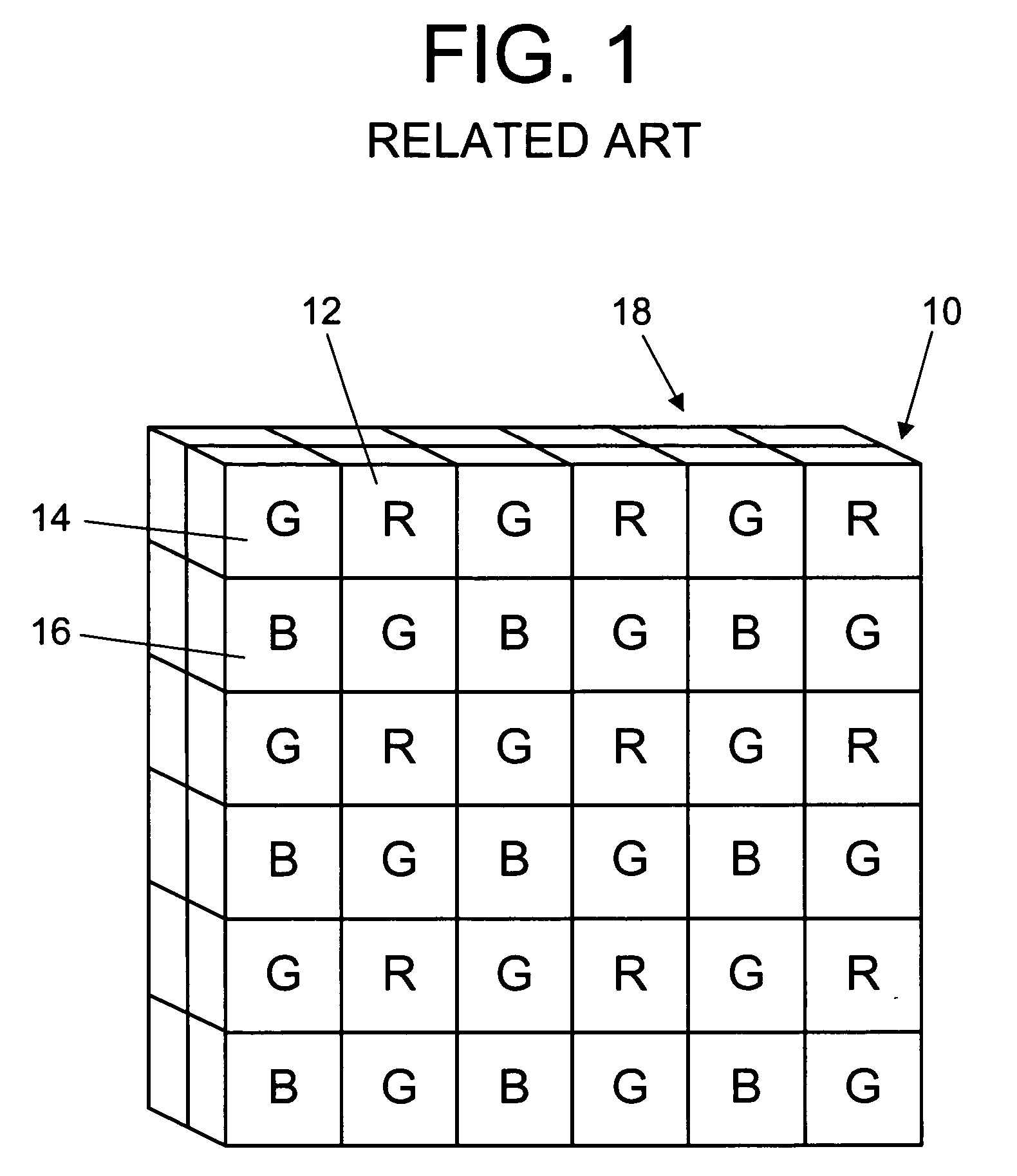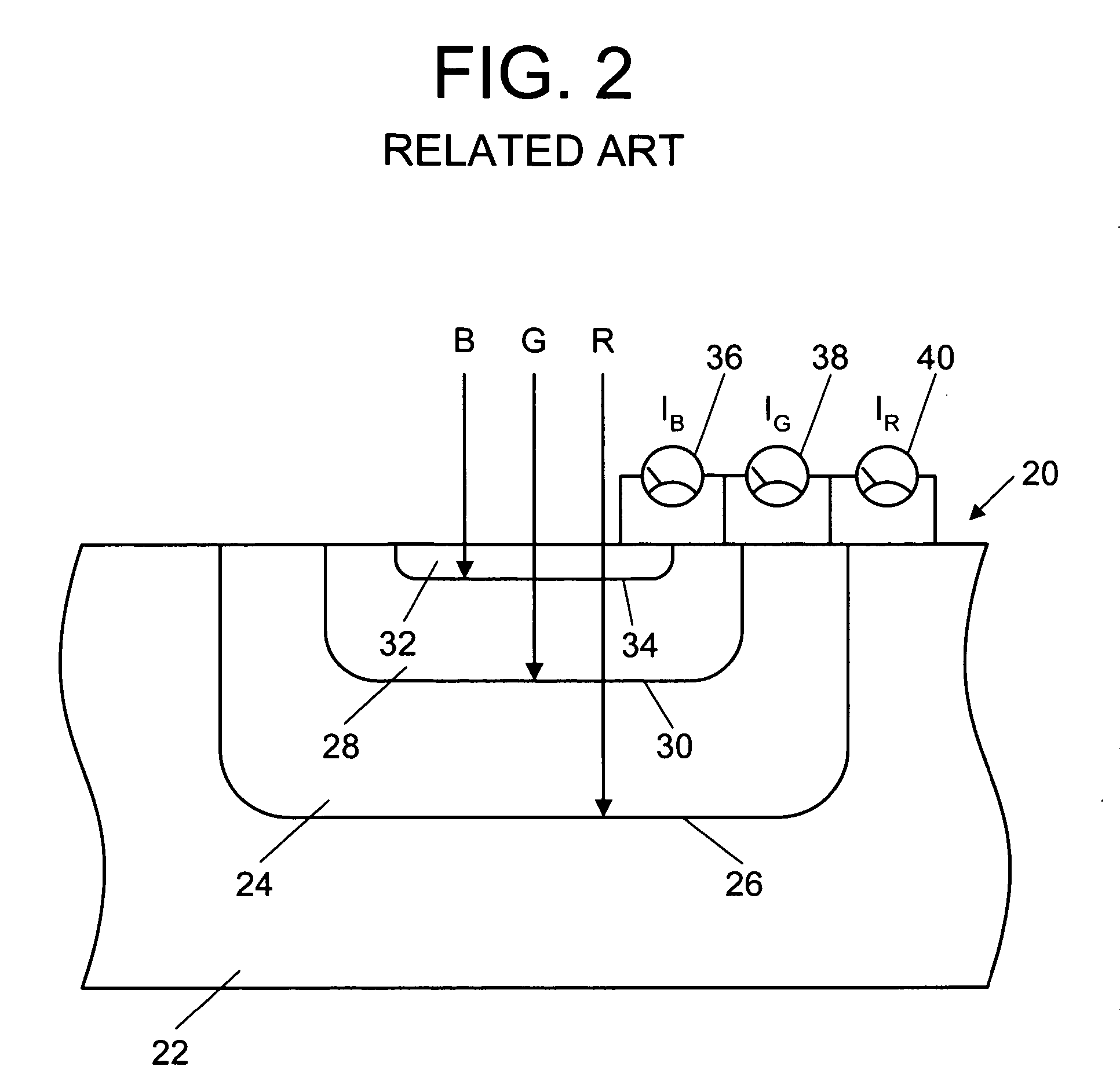Vertical tri-color sensor
a tri-color sensor and vertical technology, applied in the field of vertical tri-color sensors, can solve the problems of degrading the image quality, prone to crosstalk between pixels, and color sensor arrays b>20/b>
- Summary
- Abstract
- Description
- Claims
- Application Information
AI Technical Summary
Problems solved by technology
Method used
Image
Examples
Embodiment Construction
[0032] Reference will now be made in detail to embodiments in accordance with the invention, examples of which are illustrated in the accompanying drawings, wherein like reference numerals refer to the like elements throughout. The embodiments in accordance with the invention are described below.
[0033] It occurred to the inventors of this invention that blue, green, and red components of light incident on a silicon substrate can be detected by converting the blue, green, and red components to surface plasmons using three vertically stacked gratings or corrugated surfaces tuned to the frequency of the blue, green, and red components, and that such an arrangement would enable vertically stacked blue, green, and red pixels to be of equal size no larger than one pixel of a monochromatic sensor array, and that there would be reduced crosstalk between the pixels as compared to the color sensor array 20 of the related art shown in FIG. 2.
[0034] A surface plasmon can be thought of as a ve...
PUM
 Login to View More
Login to View More Abstract
Description
Claims
Application Information
 Login to View More
Login to View More - R&D
- Intellectual Property
- Life Sciences
- Materials
- Tech Scout
- Unparalleled Data Quality
- Higher Quality Content
- 60% Fewer Hallucinations
Browse by: Latest US Patents, China's latest patents, Technical Efficacy Thesaurus, Application Domain, Technology Topic, Popular Technical Reports.
© 2025 PatSnap. All rights reserved.Legal|Privacy policy|Modern Slavery Act Transparency Statement|Sitemap|About US| Contact US: help@patsnap.com



